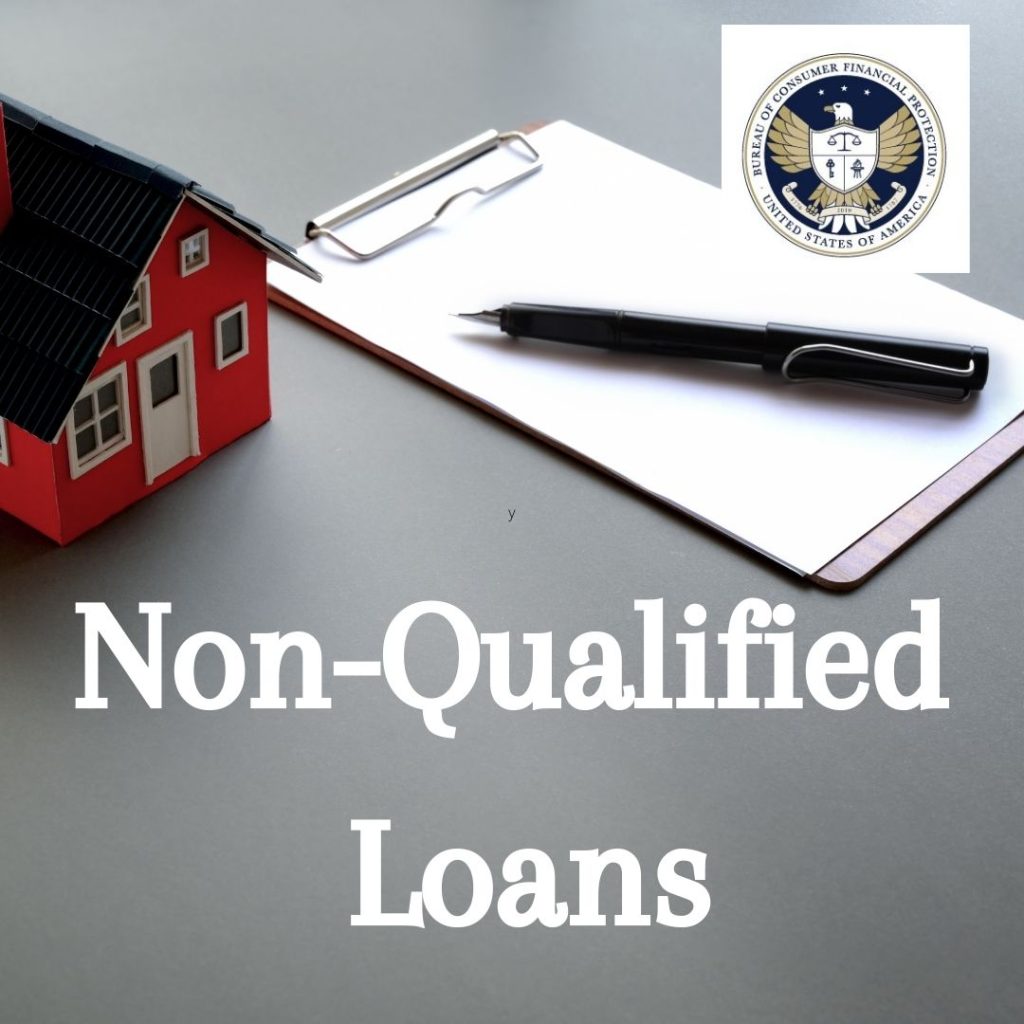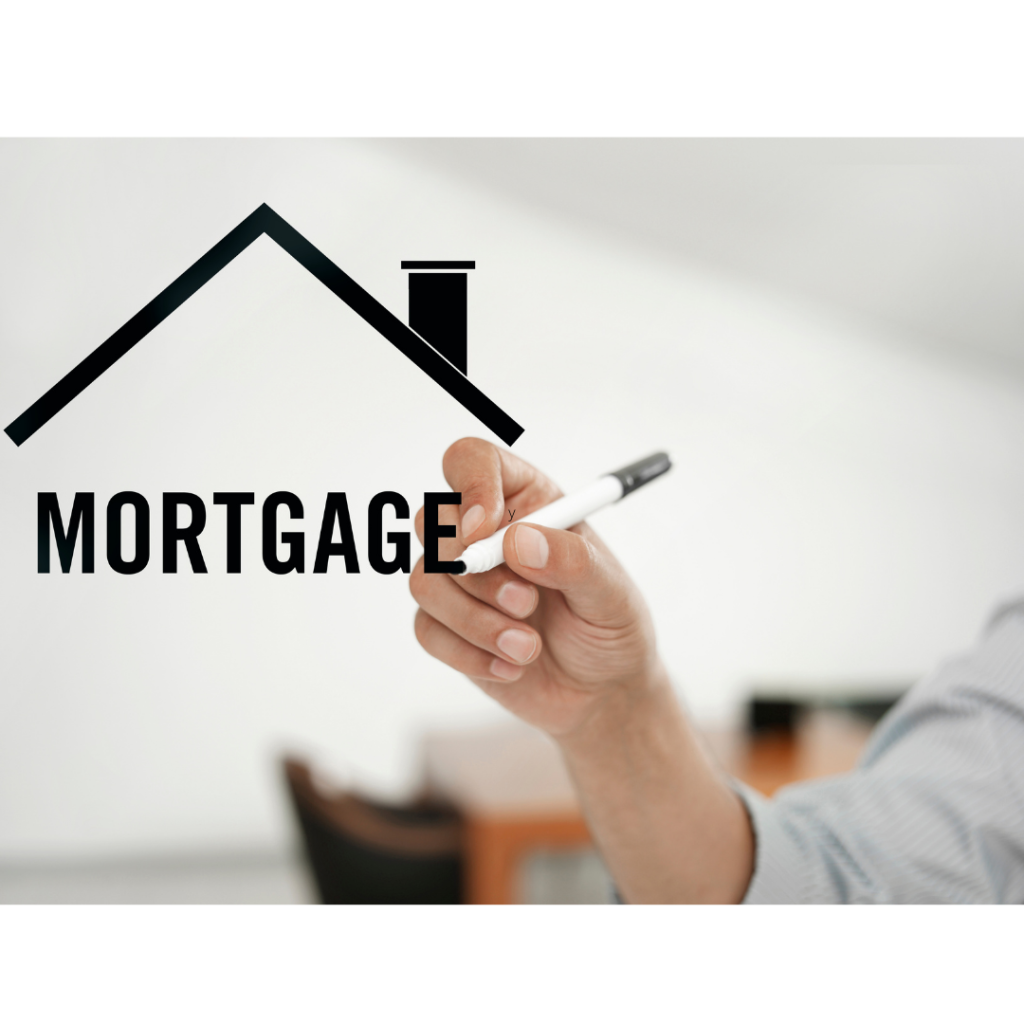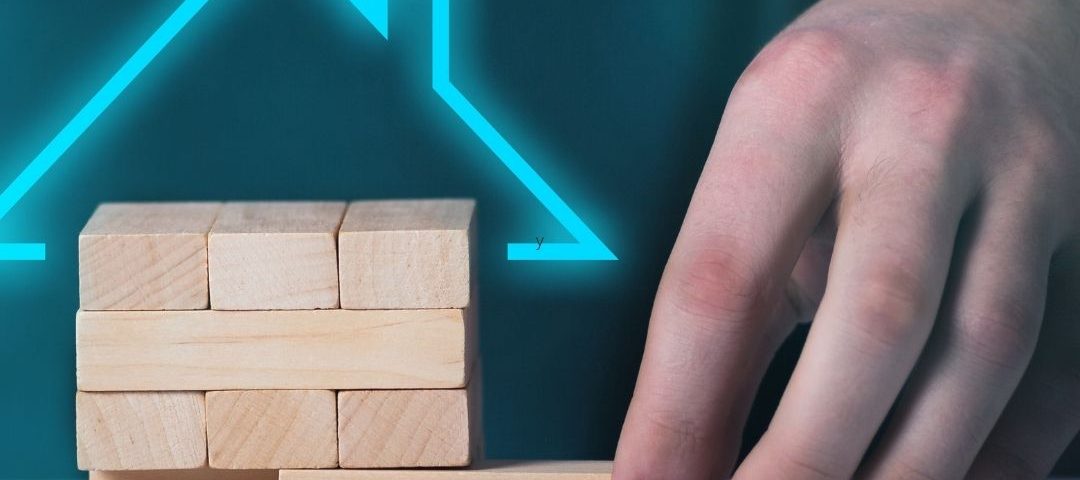What is a Non-QM Mortgage?

What credit score do I need to buy an investment property?
January 27, 2022
Who Are the Richest Real Estate Investors?
January 31, 2022When trying to buy a home or investment property you’ve most likely considered getting a mortgage, or outside financing to help you make the purchase. Between FHA loans, conventional loans, jumbo loans, hard money loans, and private money loans there are seemingly endless options.
Despite all of the loans that are available, there are two major distinctions you should know about: qualified versus non-qualified mortgages. Unlike a qualified mortgage, a nonqualified loan is not subject to certain restrictions such as a debt-to-income ratio requirement. This makes non-qualified mortgages an attractive option for borrowers who don’t necessarily fit the ‘standard’ mold when buying a home, or for buyers that are looking to acquire a property that doesn’t meet FHA or conventional loan requirements, as is often the case for real estate investors.
In order to know whether or not a non-qualified mortgage is right for you, we’ll discuss in detail what they are, where they came from, and the unique features and benefits they bring to borrowers, as well was what you’ll need to watch out for in the even you ever decided to apply for one.

How did the CFPB created Non-QM loans?
In order to best understand what a non-qualified mortgage is and how it compares to a qualified mortgage, it’s important to know the role that the Consumer Financial Protection Bureau’s, or CFPB, plays. The CFPB is a government agency that was created in the wake of the housing crisis with the goal of protecting consumers from predatory lending practices.
A little backdrop, prior to the 2008 housing crisis, lenders had much more freedom in terms of who they could loan money to. Buyers were getting qualified for mortgages low to no credit scores, thousands of dollars of debt, and in many cases did not have to provide any documentation of income sufficient to meet their monthly mortgage payments.
While it may sound risky for a lender to loan someone money who could not prove they could afford it, it was a risk that many were nevertheless willing to take in exchange for higher interest rates that they would charge to the borrowers. And with the prices of home ballooning in the years leading up to 2008, homeowners that could not afford the payments anymore, could simply move and take their equity with them.
When, however, the housing bubble burst many of these borrowers, also referred to as subprime borrowers, couldn’t afford the monthly payments and could not sell to pay off the lender leading many to go into default and their homes to go into foreclosure. Naturally, to prevent another crisis like this from unfolding again, Congress passed numerous regulations that imposed minimum requirements lenders had to hold their borrowers to in order to prevent consumers from including the Dodd-Frank Act which led to the creation of the CFPB.
As an agency, the CFPB became responsible for implementing and enforcing a variety of new consumer protection laws including a new Ability-to-Repay/Qualified Mortgage Rule (ATR/QM Rule). This rule requires lenders to determine in ‘good faith’ that a borrower can in fact repay a loan before actually making the loan to the borrower by verifying bank statement information, their employment, and personal financial and credit history.
It was here in the creation of rules that set the outline for qualified mortgages that the non-qualified mortgages really began to take shape into what they are today.

What is a Non-Qualified Mortgage?
A nonqualified mortgage, or a non-qm, is a loan that does not nor is required to meet what are called agency-standard documentation requirements set forth by the CFPB. While a qualified mortgage adheres to the rules and regulations set out by the CFPB, a non-qm mortgage typically has one or a combination of the following qualities:
- The loan is longer than 30 years. As a practice, standard mortgages for properties with 1 to 4 units are usually 30 years long, or 15 years if the borrower would like to accelerate paying off the loan. So loans that cover a length of time greater than 30 years are considered non-qualified.
- Fess greater than 3% of the loan amount. When getting any loan there are certain fees and points that are charged to the borrower. A lender commonly charges an origination fee which covers the cost of pulling a borrower’s personal and credit history, verifying their employment and loan application, as well as underwriting the loan and servicing it over the lending period. Lenders can also charge borrowers appraisal fees, application fees, and points, or percentages of the loan amount that they turn around and pocket themselves. Because the many fees associated with getting a loan can quickly add up, qualified mortgages must limit their total charges to 3%, which leaves any loan that exceeds that amount considered a non-qm loan.
- The adjustable-rate exceeds the cap. An additional characteristic of non-qualified mortgages is they have adjustable interest rates that exceed the caps that are set forth by Fannie Mae or Freddie Mac. To protect consumers from paying $2,500 a month on their home in June, $3,000 a month on their home in August, and $4,500 a month by the following January, the CFPB put forth put regulations limiting how much an adjustable rate mortgage could increase annually as well as over the life of the loan. As a result, any mortgage with an adjustable interest rate that exceeds the caps is considered a non-qualified mortgage.
- It’s for a non-owner-occupied or investment property. In the world of real estate and mortgages generally fall into one of two categories: owner-occupied properties where the borrower intends to live there as their primary residence, and non-owner occupied properties where the borrower is specifically buying the property not to live there, but for investment purposes. Largely, loans, where the borrower does not plan on living there, are classified as non-qualified mortgages.
- The borrower’s credit is too low. As a part of the Ability to Repay rule imposed by the CFPB borrowers planning to get a qualified mortgage must have credit that meets a certain threshold. While this minimum amount is subject to chance, and lower amounts may be allowed if the loan meets all other FHA, VA, or conventional requirements, typically a borrower must have at least 580 credit score for a qualified mortgage. Therefore, any loan where the borrower has a poor credit score is most likely a qualified mortgage, and will require the borrower to put forth a greater down payment amount to offset the lender’s risk of making the loan.
- Loans that have negative amortization. Negative amortization is when the outstanding principal balance of a loan increases as each monthly mortgage payment is made. Typically, a loan is fully amortized meaning that each monthly mortgage payment paid pays in part for the interest and the principal, so that by the end of the loan term the loan is considered fully paid off. With negative amortization, the opposite occurs, and the lender allows the borrower to essentially pay less than what they are owed in interest, in exchange for a promise from the borrower that collective full amount will be paid as a lump sum at the end of the loan. For example, let’s say you get a negatively amortizing loan of $500,000 that charges a 3% interest rate. Instead of paying a $1,500 a month mortgage payment that would cover both principal and interest, or even $1,250 a month which would cover the interest payments, your lender agrees to accept $800 a month mortgage payments and will let you make up the difference at the end of the loan. In general negative amortizing loans are considered high risk, and therefore characteristic of non-qualified mortgages.
- Allows for interest-only payments. Along the same lines as a loan with negative amortization, mortgages that offer interest-only payment terms are non-qualified mortgages. Interest-only payments are when you only pay the interest on your loan each month and do not make any progress on paying down the principal. So using the example above, if you get a $500,000 loan and only pay $1,250 a month for the mortgage each payment is only going to pay off the interest and not the principal. At the end of the loan period, you’ll be faced with what is called a balloon payment or a large, one-time payment that is made at the end of a loan in addition to the regular monthly payment that is due.
- The loan-to-value ratio is more than 80%. Loans are limited to a maximum loan-to-value ratio of 80 percent. As a reference, a loan-to-value (LTV) ratio is a calculation that takes the loan amount and divides it by the purchase price of the property, if a purchase loan is being sought, or the appraised value of the property, if the borrower is seeking to do a refinance. For example, if a borrower is trying to get a $500,000 loan on a $550,000 property, they are seeking to get a loan with an estimated 90 percent loan-to-value ratio. While there are qualified mortgages like the FHA and conventional loans that allow for higher LTV values, loans where the borrower is taking a loan out on the majority of the property’s value are considered non-qualified.
- The debt-to-income ratio is greater than 43 percent. The debt-to-income ratio is a metric used by lenders to see how much a borrower’s debt compares to their monthly gross income. To calculate the debt-to-income ratio, you take all monthly debt payments, such as those a borrower would pay for a student loan, car payment, store credit card and more, summing these all together and then dividing the total by monthly income before taxes are paid and tax deductions made. As an example, if a real estate investor earns $4,500 a month before taxes, and pays $200 a month for their car, $500 a month for student loans, $1,000 on the mortgage for their primary home and $450 a month for their personal credit card, their debt-to-income ratio would be over 47 percent ((200+500+1000+450)/4500). Unless this specific investor is able to get a loan for a small creditor, or a lender that has less than $2 billion in assets and has made less than 500 mortgages in the preceding years, whatever loan they get will be considered non-qm. Such an emphasis has been placed on the debt-to-income ratio, as in the years following the Great Recession it was found that the higher a borrower’s debt-to-income ratio was, the more likely they were to struggle with repaying back the loan and go into default.
- The loan amount is greater than the conforming loan limit. The conforming loan limit is the maximum loan amount that the government-sponsored enterprises Federal National Mortgage Association, also known as Fannie Mae, and the Federal Home Loan Mortgage Corporation, or Freddie Mac, will allow for the mortgages that they purchase or guarantee. For greater context, most residential loans are created at the consumer level by lenders, before being packaged together as securities which are then bought and sold in major financial markets. Because mortgages backed by Fannie Mae and Freddie Mac receive a greater valuation, most lenders will follow the specific underwriting requirements they set forth. One of the biggest standards is the conforming loan limit. These are generally established on a county-by-county basis, and will greatly depend on the cost of housing in that locale. For example, because the average price of a home in areas like Los Angeles and New York is close to $1 million the conforming loan limit in these areas is typically above $900,000. Contrasting, the conforming loan limit in an area like Gary, Indiana will be close to $417,000. Whatever the limit is for that particular county, if a borrower is seeking a mortgage that is greater than that amount, they are looking for what is considered a non-qualified loan.

The good and the bad side of Non-QM loans:
Due to their nature, there are both beneficial and risky aspects of non-qualified mortgages that anyone should take into consideration before getting one. The greatest downside to getting a non-qualified mortgage is they are not eligible for FHA, VA, or conventional homes loans meaning a borrower could not expect to put up only 3-5% of the purchase price as a down payment. Additionally, because these loans are not eligible for government guarantees, there are fewer lenders in general who are able or willing to originate them. With fewer lenders to choose from, borrowers interested in getting a non-qm loan will often face higher interest rates and lender fees which means they can be subject to paying much more in closing costs and monthly mortgage payments.
That being said, with non-qm loans, there are several reasons why someone would choose to get a non-qm loan as opposed to applying for a qualified mortgage in spite of all these potential downsides. The first is lenders have greater flexibility when extending someone an non-qm mortgage. This freedom means borrowers that would otherwise not be able to get a loan like those with poor credit can. Additionally the flexibility allotted by a non-qm loan gives buyers the ability to purchase properties that are in poor condition that they have no intention to live in. So if you’re a real estate investor looking to buy major fixer that needs to be completed gutted, and remodeled from the inside out, even though you would likely not be able to qualify for a qualified mortgage, you could nonetheless get financing by seeking a non-qualified mortgage.
The additional benefit of seeking a non-qm loan is borrowers can avoid the tedious and lengthy underwriting process that they would otherwise experience if they were to get a qualified mortgage. Typically, to secure a mortgage borrowers are required to provide extensive documentation such as two years of pay stubs, W2 forms, tax returns, bank statements and more. However, with a non-qm loan there are fewer requirements. With fewer requirements, there’s less documentation borrowers need to provide, which enables lenders to able to service a wider range of borrowers who could otherwise not get a loan through conventional means, such as those that have recently entered the country, experienced bankruptcy, or gone through a divorce, to name a few. Even for small business owners, recent citizens, and independent contractors who simply can’t provide these documents because they don’t apply to them can seek non-qualified loans. Overall, getting a non-qm mortgage is a smart choice for those looking to be more creative when it comes to qualifying for a property.

How to find a Non-QM lender?
Hopefully, after reading this article the idea of getting a non-qualified mortgage has not scared you. For certain borrowers, such as the real estate investor looking to acquire a fixer, or a self-employed borrower who writes off everything to reduce their taxable income, getting a non-qm loan is a viable alternative to still be able to purchase real estate. To ensure you find the right non-qualified mortgage lender, get in touch with me at 9177404325.
Mortgage Rates
DSCR Mortgage: 7.375%
Commercial Mortgage: 7.5%
Single family, Condo Investment Property: 7.375%
Portfolio of Residential Homes: 7.5%
Calculate Your Monthly Payment
Mortgage Information
Monthly Payment
Principal and Interest: $0
Total Monthly Payment: $0



